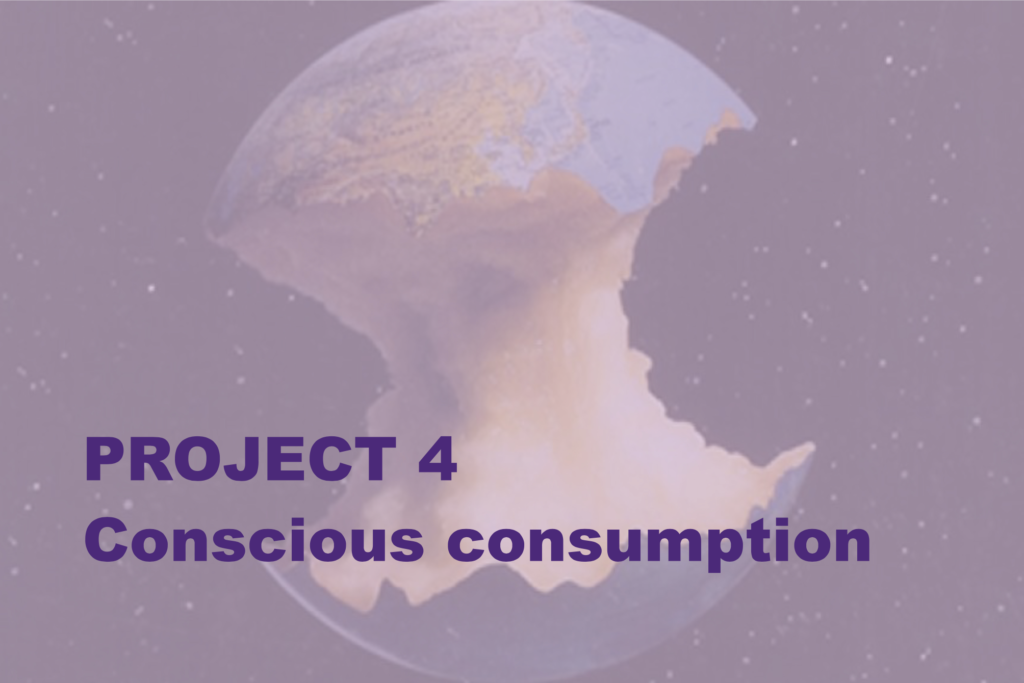
Through thinking and researching on the three themes, I regard conscious consumption as the theme of my project 4.
1. Mindmap
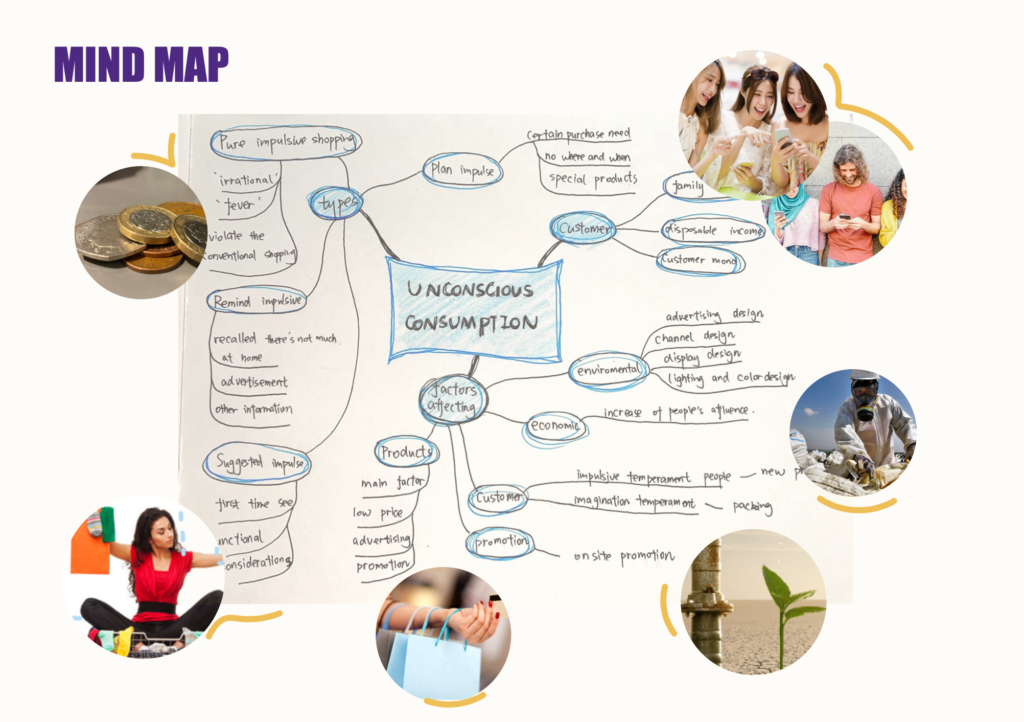
Based on this theme, I first diverged my mind and made a mind map.
2. Inspiration source
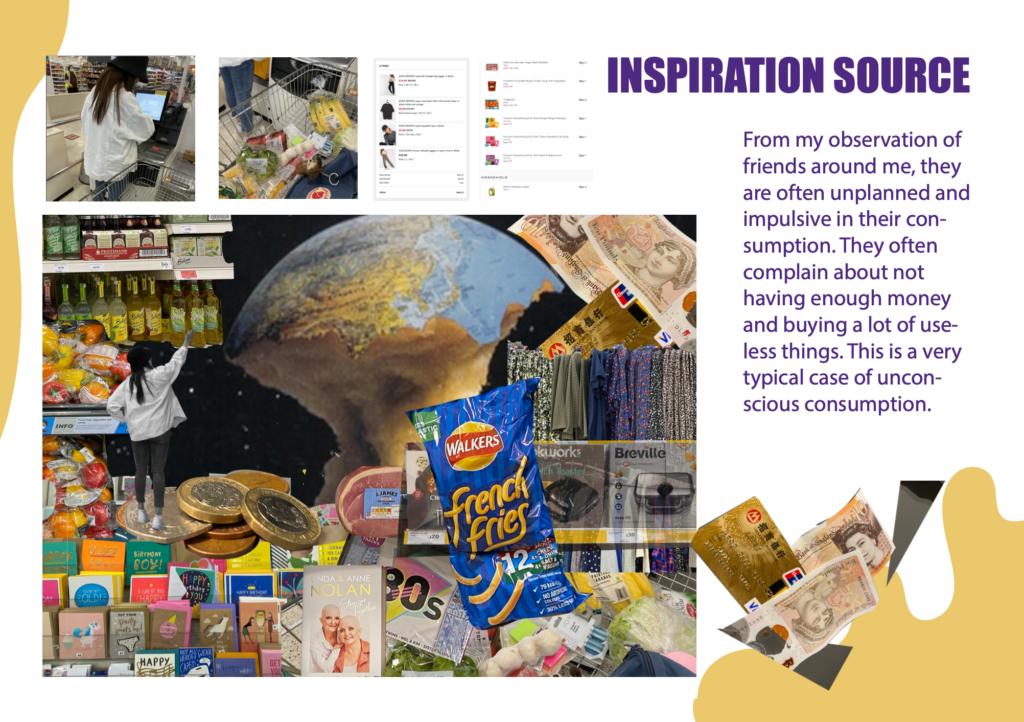
From my observation of my friends around me, I found that they have more or less the habit of unconscious consumption. This situation is very common in this group, so in order to solve this problem, I identified the target group as Chinese students (22-28 years old).
3. Research
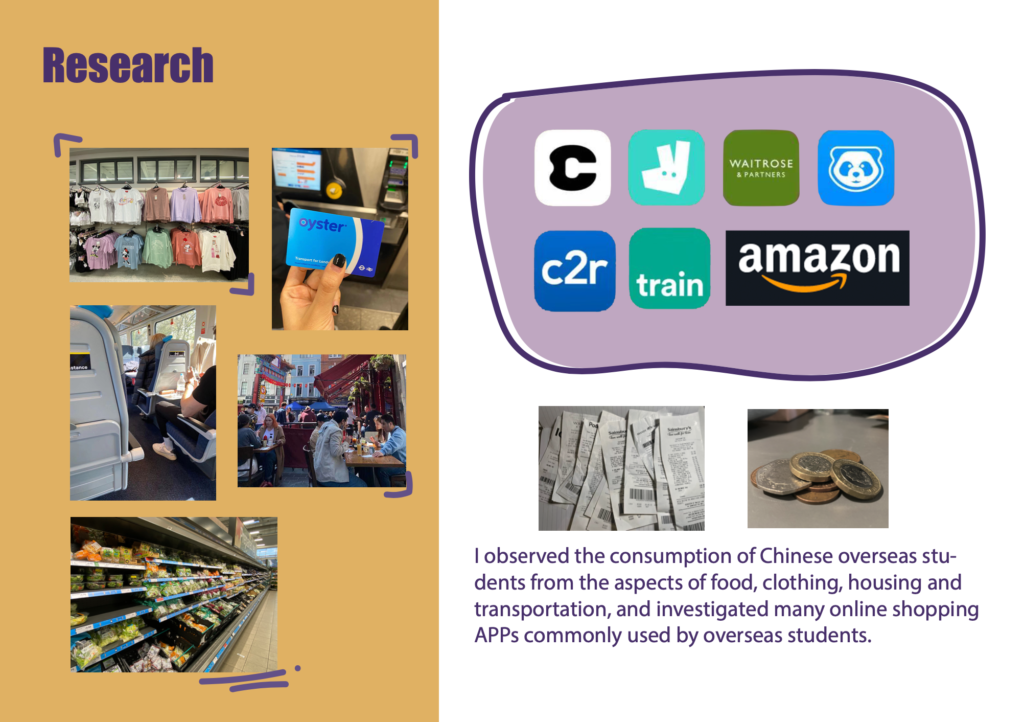
Through field research, photography, observation, etc., I found that international students’ shopping is mainly divided into online and offline shopping, and online shopping will be more frequent. Then I downloaded the shopping software that international students like to use for analysis and research.
5. Questionnaire
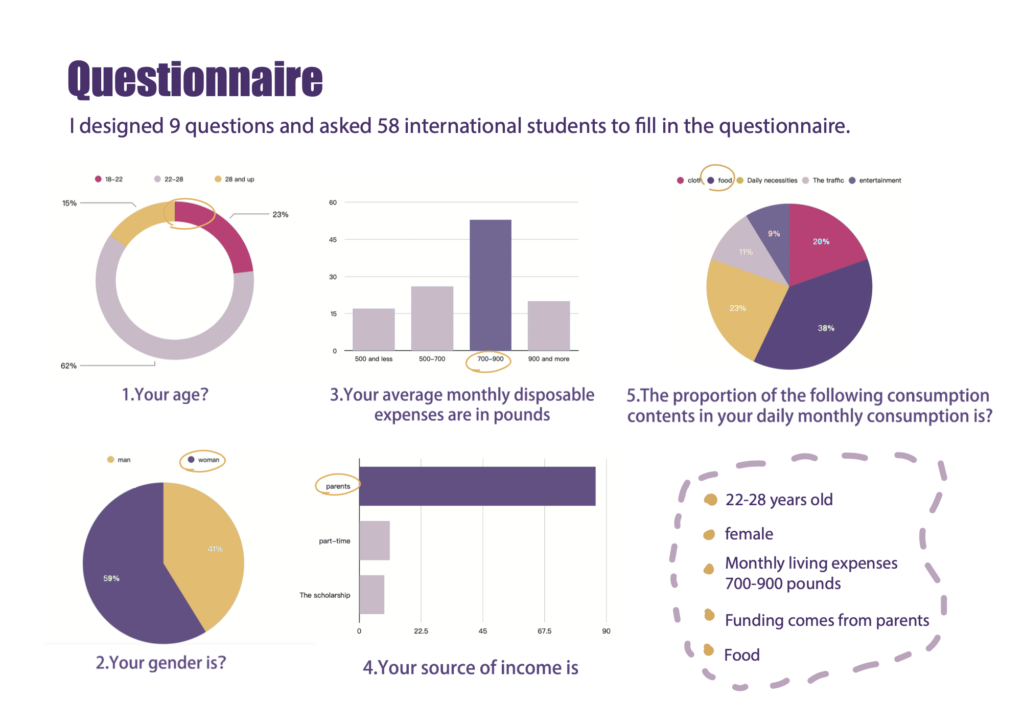
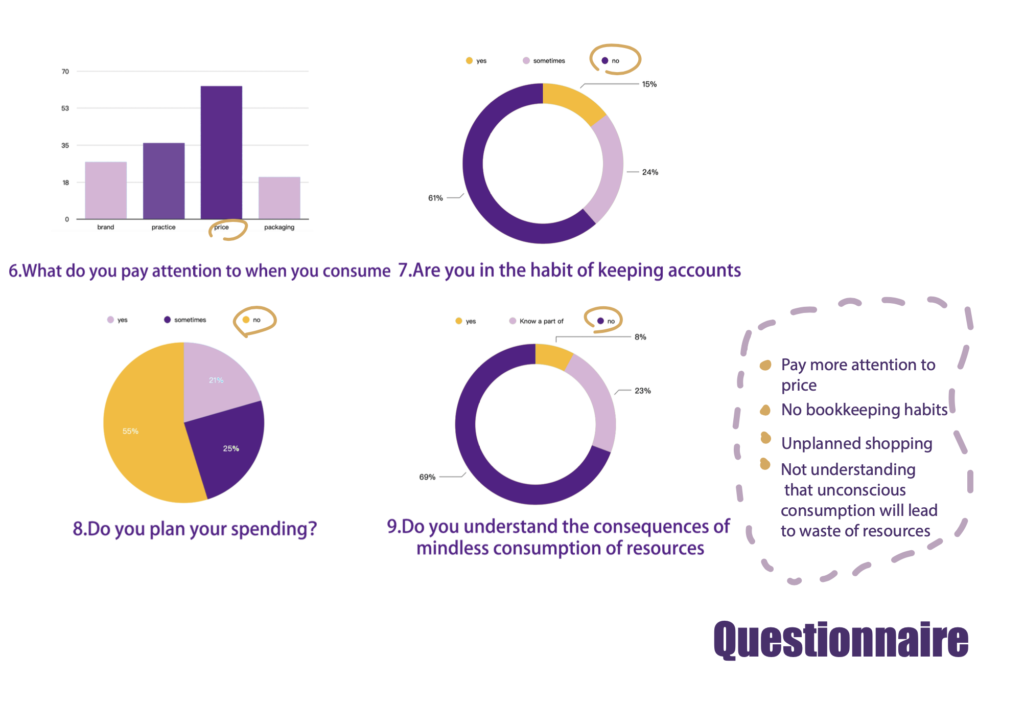
By analyzing the questionnaire, I have come to the main characteristics and needs of this type of target group.
1.Mainly young women aged 22-28
2.The monthly consumption is between 700-900 GBP
3.Most funding comes from parents
4.The most important thing is price when buying things
5.No bookkeeping habits
6.No plan shopping
7.Not aware of the link between conscious consumption and environmental shortages
Such unconscious shopping behavior of Chinese students has caused two problems: shortage of funds and waste of resources. So next I will focus on these two issues to design the corresponding app.
6. App analysis
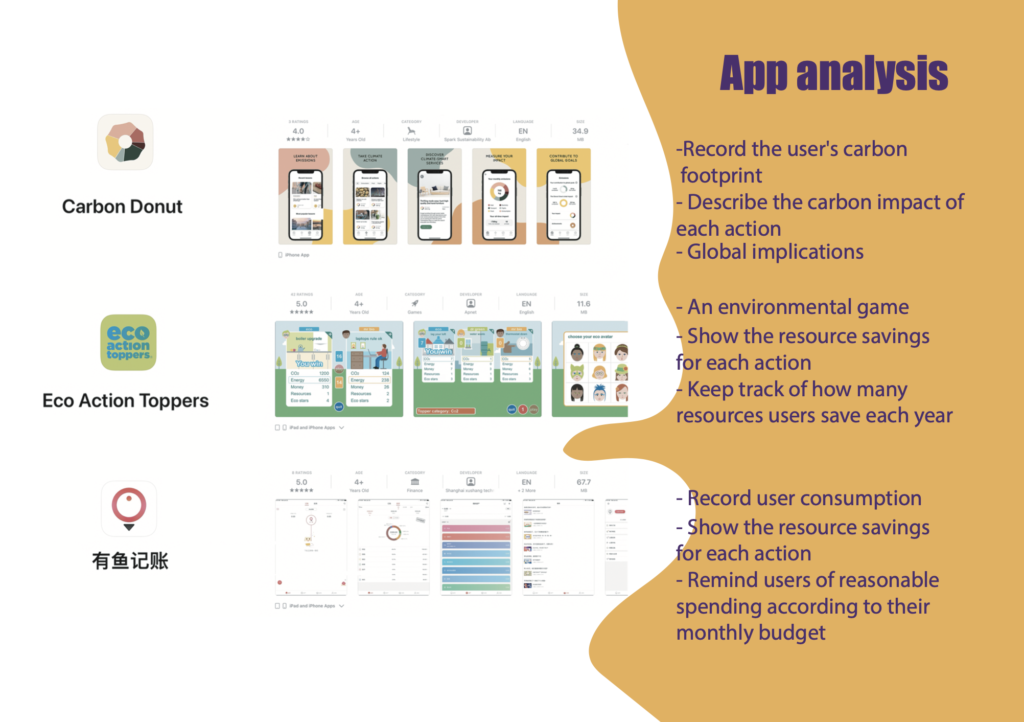
After downloading and analyzing several similar apps on the market, I listed the advantages and disadvantages of each app. And I decided that the app I made should be designed in combination with two aspects of accounting and resource protection, so that two problems can be solved at the same time for the unconscious consumption behavior of international students.
7. PACT

I analyzed the characteristics of the target group from four aspects, people, action, content and technology, and made this chart.
8. Personas
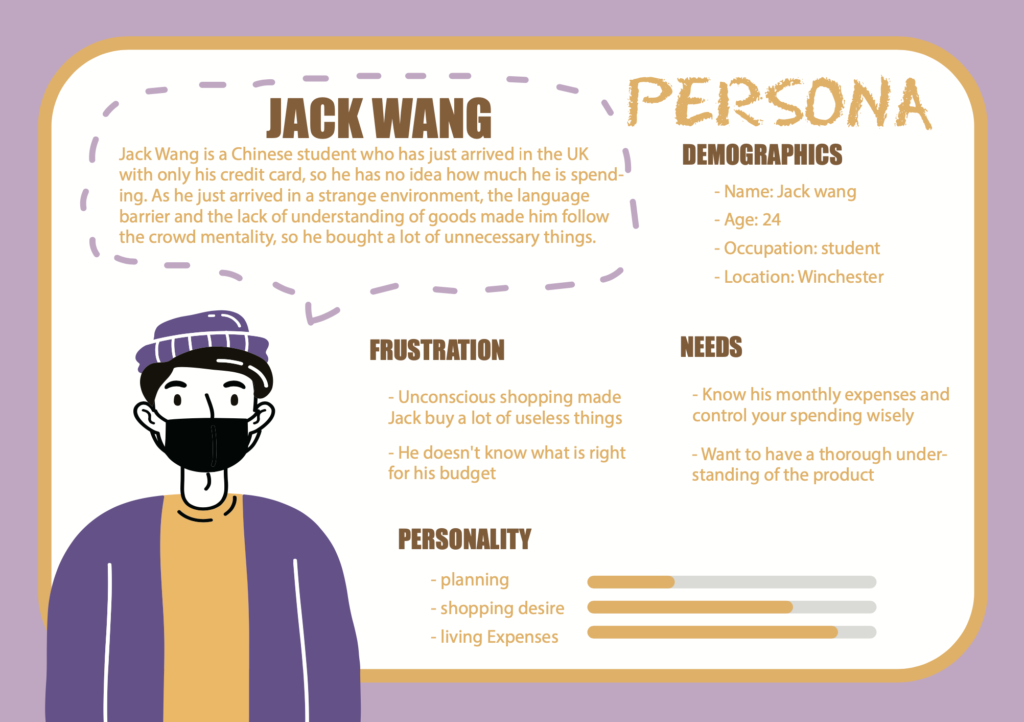
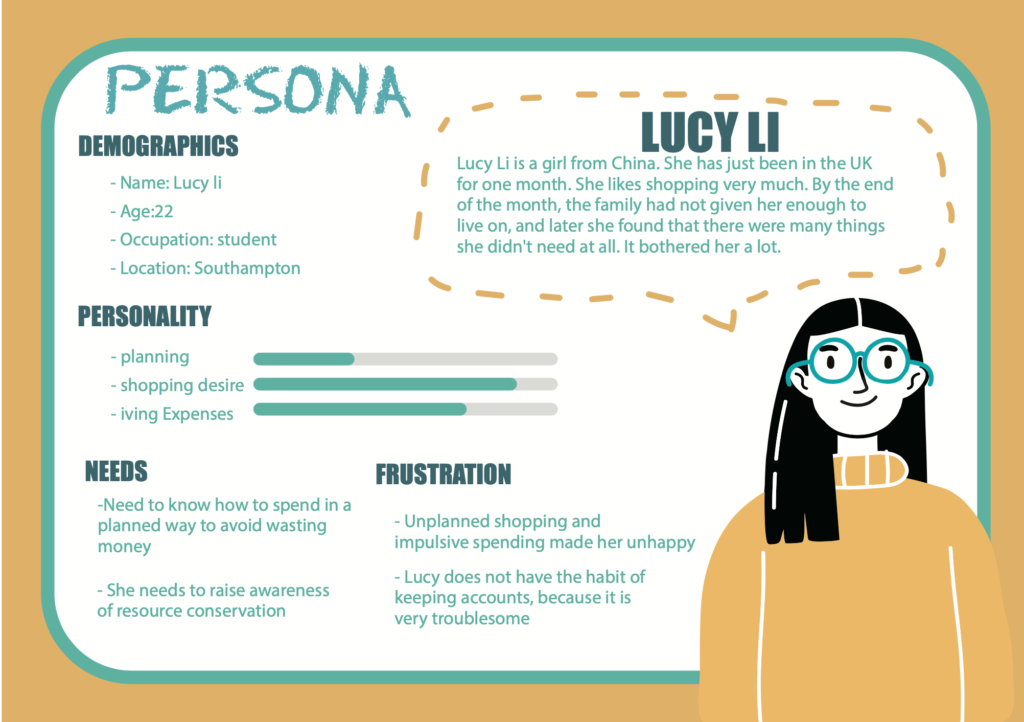
9. Ideas
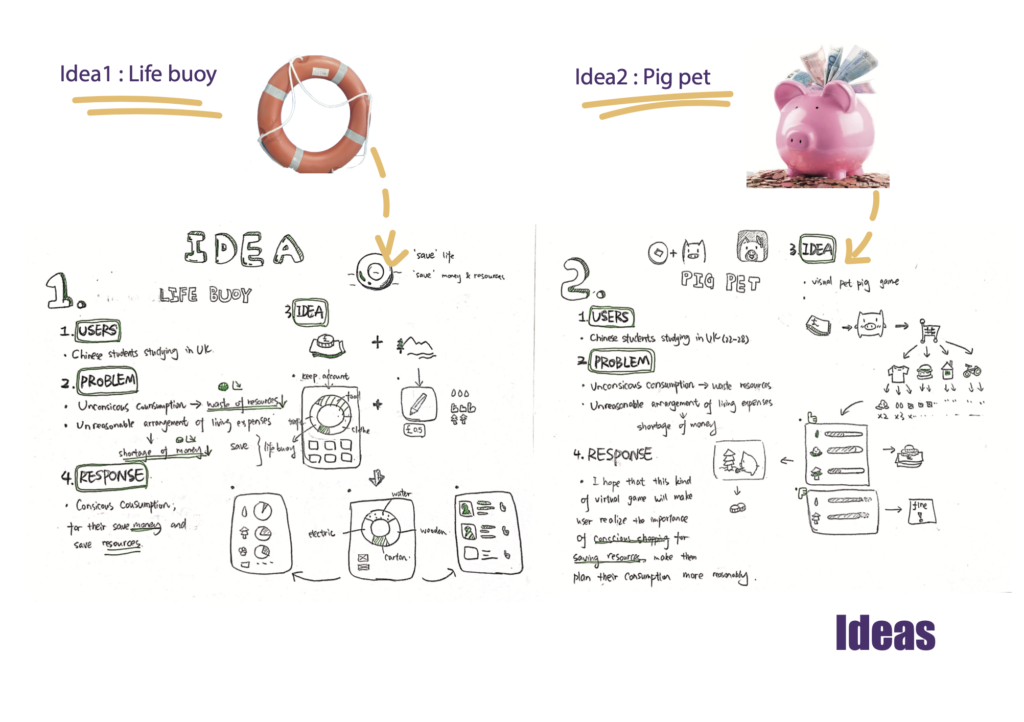
Idea1:
I started with the two consequences caused by this reason and thought about how to prevent the waste of resources and money. As for the problem of money, I thought of the ” keep accounts app”, which can effectively help users record expenditure and remind them to arrange consumption reasonably. On the other hand, adding the problem of resource waste can record expenditure in the form of consumption of resources, rather than just in the form of amount.
This is to use the data of resource consumption to express the need to buy something, not only to measure the value of it in money.
The total amount of resources consumed by users will be counted every week. The one on the left shows the per capita amount of resources used by users, and the one on the right shows the resource usage of each user.
I named it Lifebuoy because, first of all, the graphics look like a Lifebuoy and are visually appealing to the user, and also because Lifebuoy not only ‘saves’ life, but also money and resources.
Hope to use this way to appeal users conscious consumption, not only for their money but also to save the earth’s resources.
Idea2:
The solving the problem of wasting resources and money, Idea 2 is more like a virtual game. My idea is to make users to raise a virtual pet pig, which, like people, needs shopping to meet their needs. Users will be given virtual money to buy items each month, and the amount of Earth resources consumed by each item will be recorded. Once a week, there will be a bonus or penalty, if the item purchased during the week consumes too many resources,the users will get a ticket, and if the item consumes a reasonable amount of resources the users will reward of gold. Users can also earn gold by asking their pets to do environmentally friendly things.
Because the piggy bank is mostly in the shape of a pig, so I use the image of a pig to design.
It is hoped that this kind of virtual game will make users realize the importance of conscious shopping for saving resources and make them plan their consumption more reasonably.
I chose idea1 in the end, because idea2 can only raise pets in a virtual way, and cannot solve actual problems, and the target group is not very interested in raising games. So under comprehensive consideration, I chose idea1.
10. Flow chart
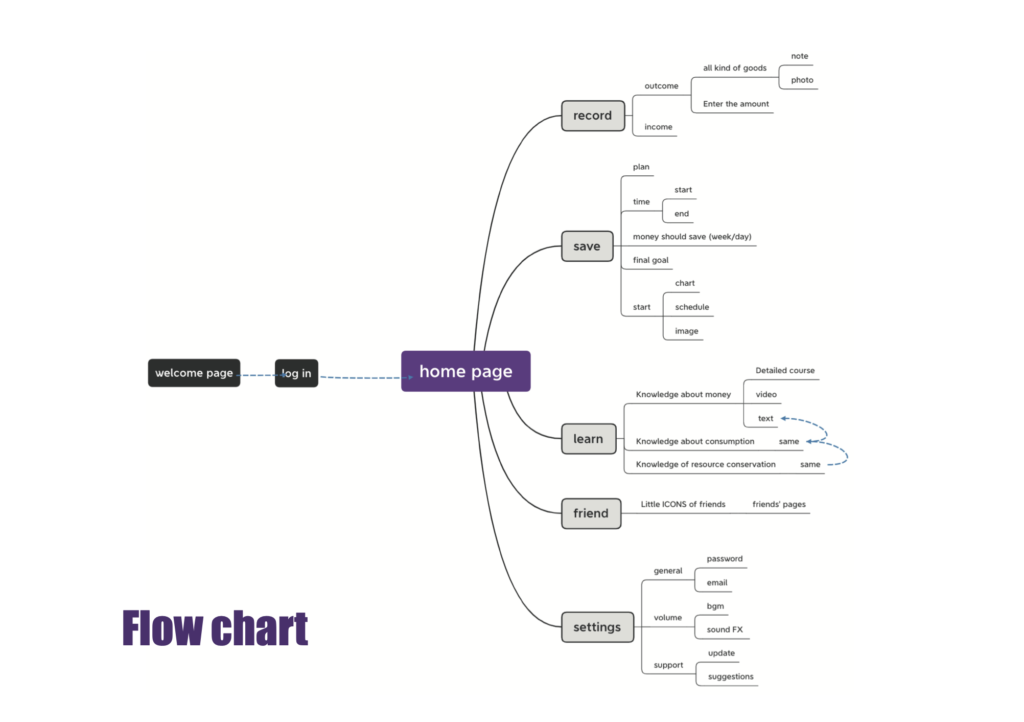
According to idea1’s plan, I made a mindmap to determine the functions of each step of the app interface.
11. sketch
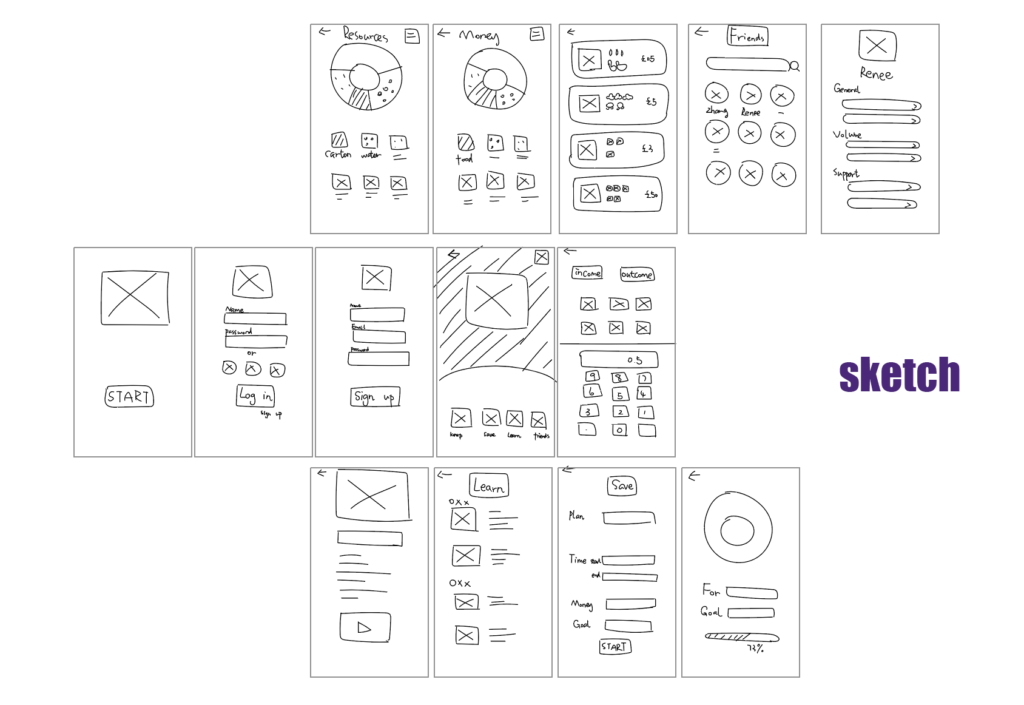
According to the flow chart, I drew the sketch of the app.
12. Preliminary test feedback
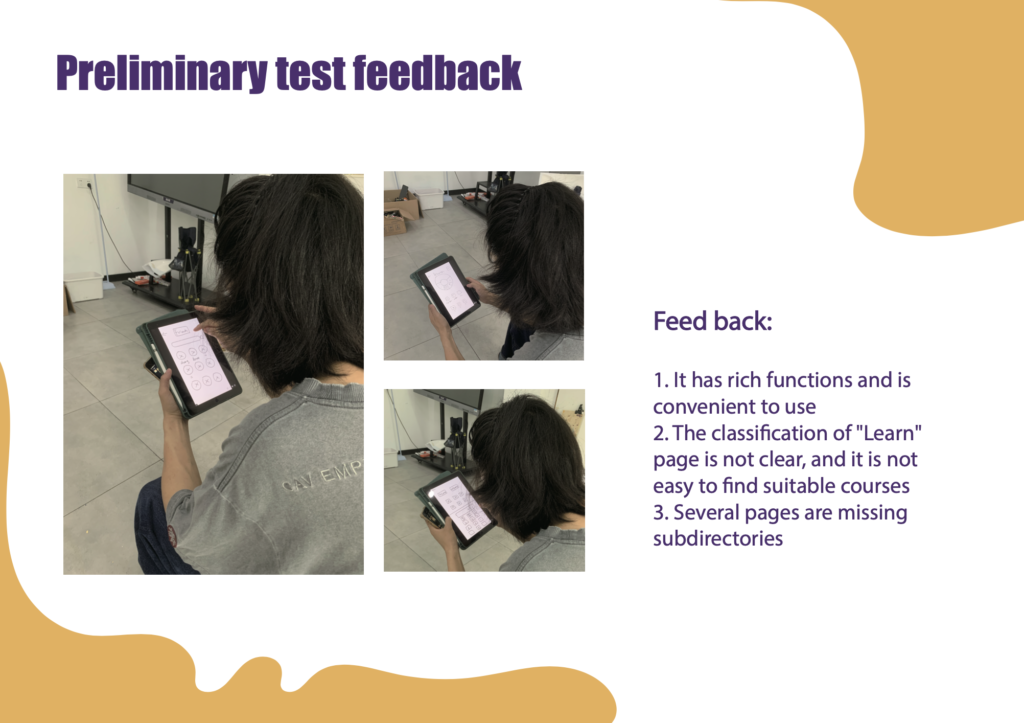
Through preliminary preliminary test feedback, I have come to three areas that need improvement.
13. Preliminary wireframe
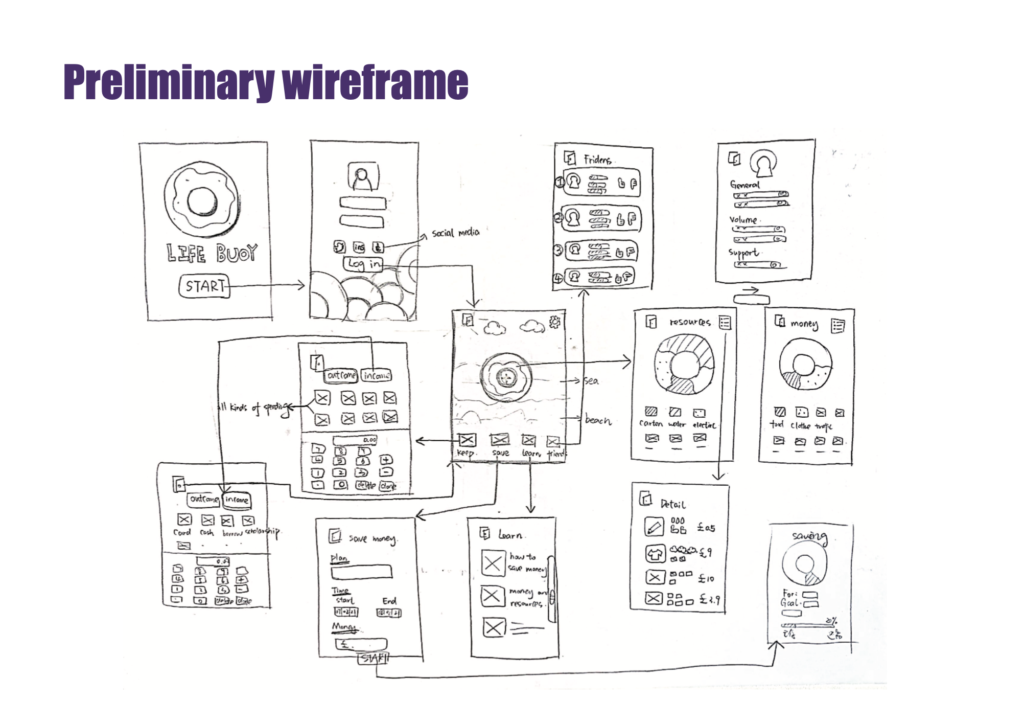
14. Lofi-prototype
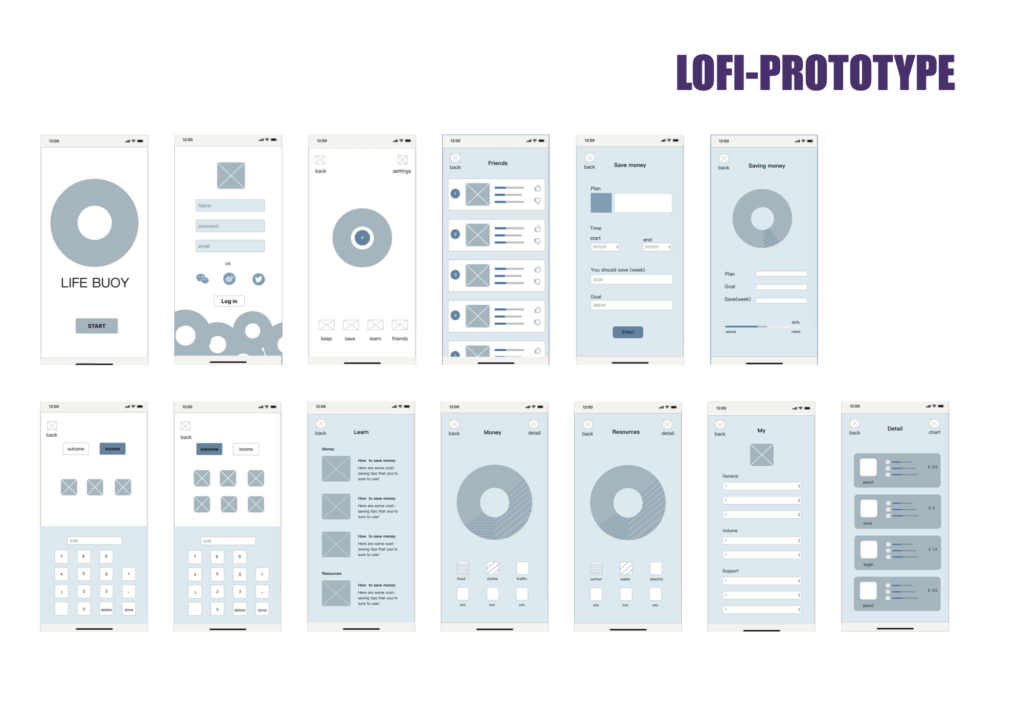
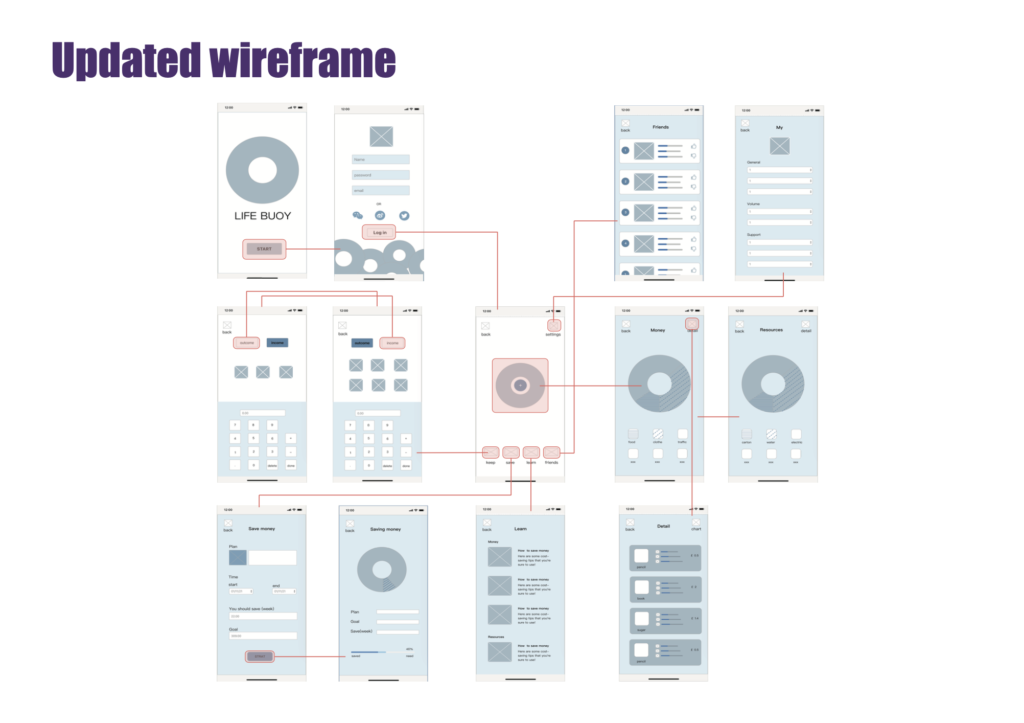
15. user test
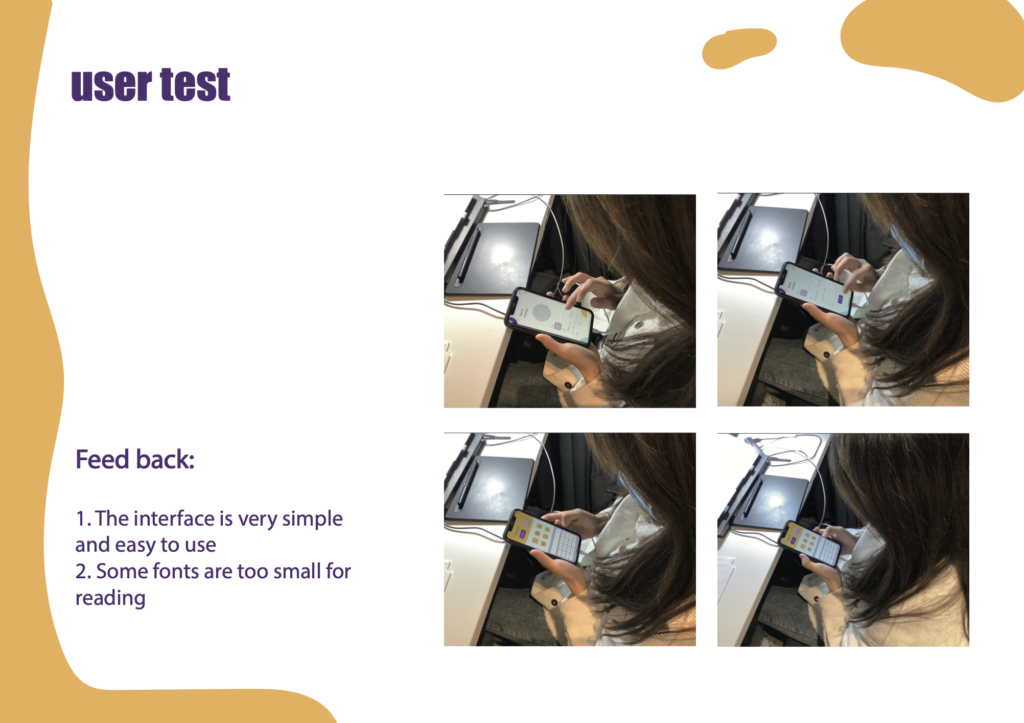
After another user test, I improved the app again.
16. Final work
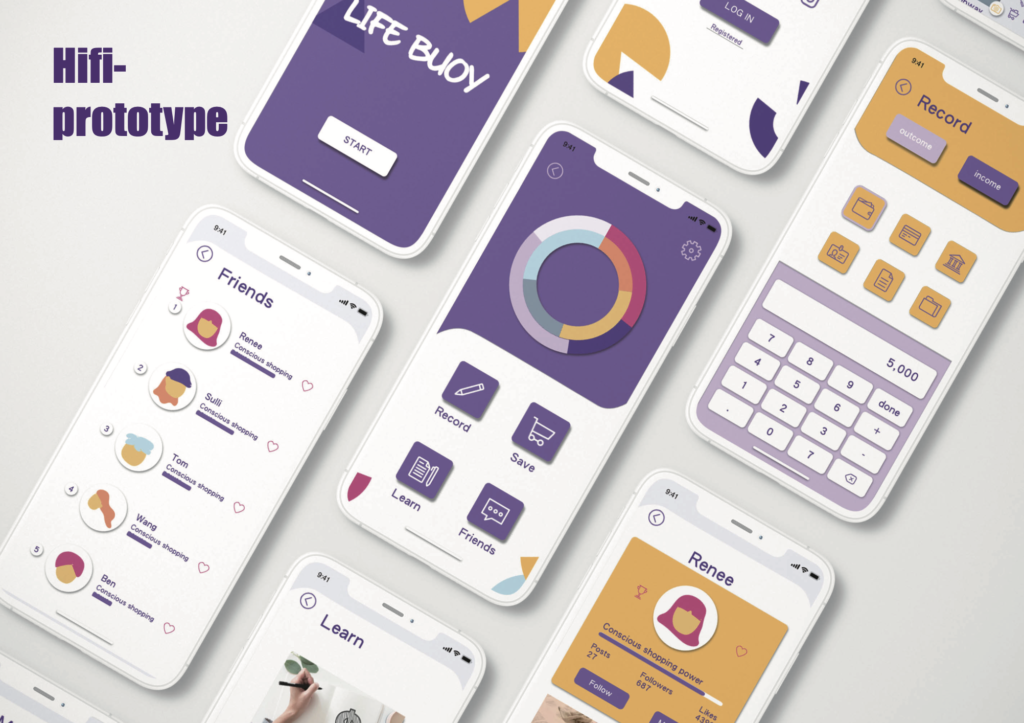
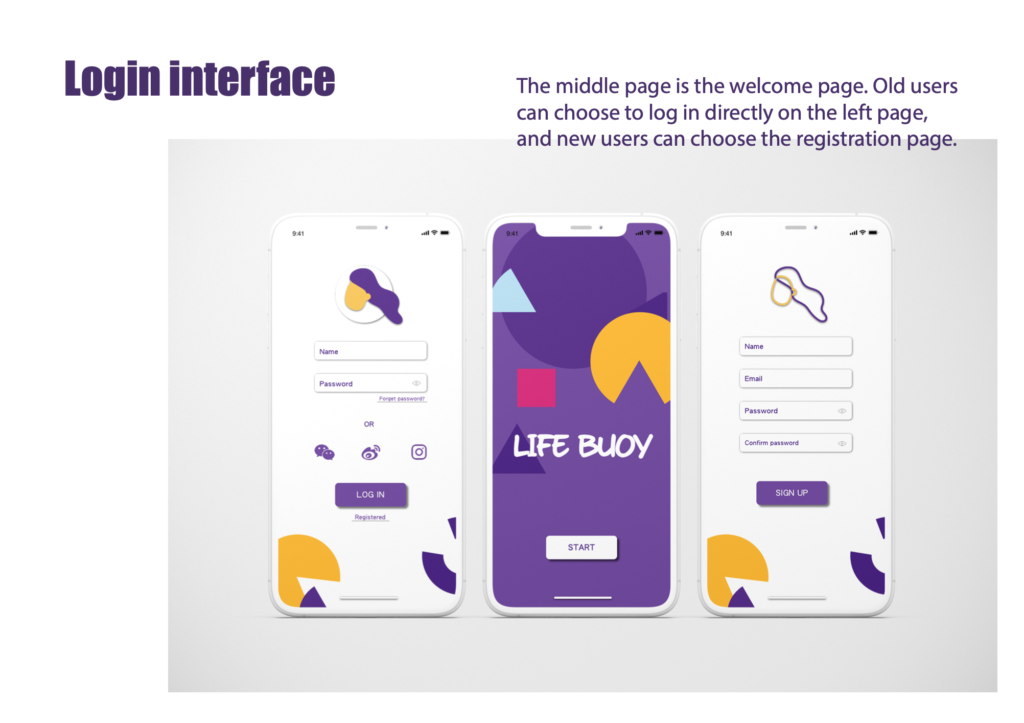
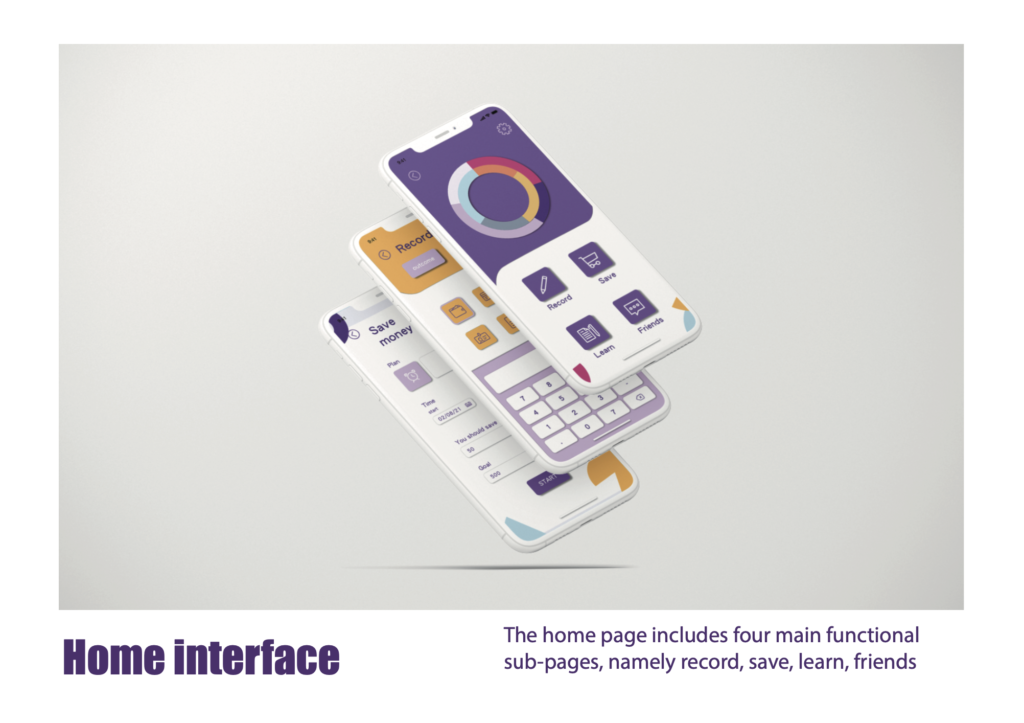
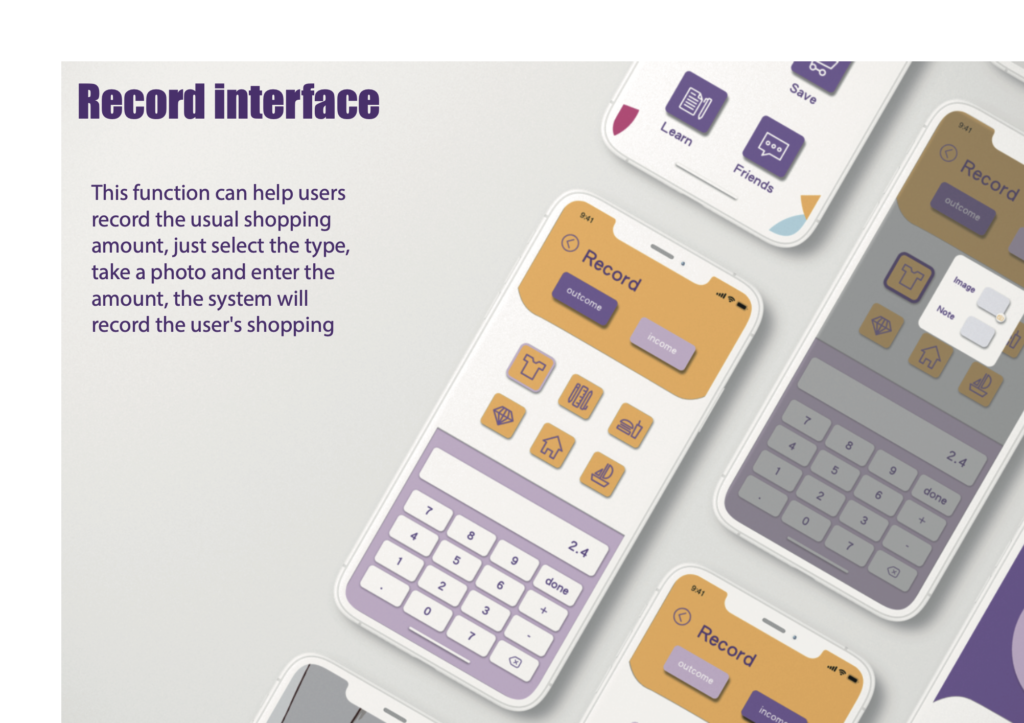

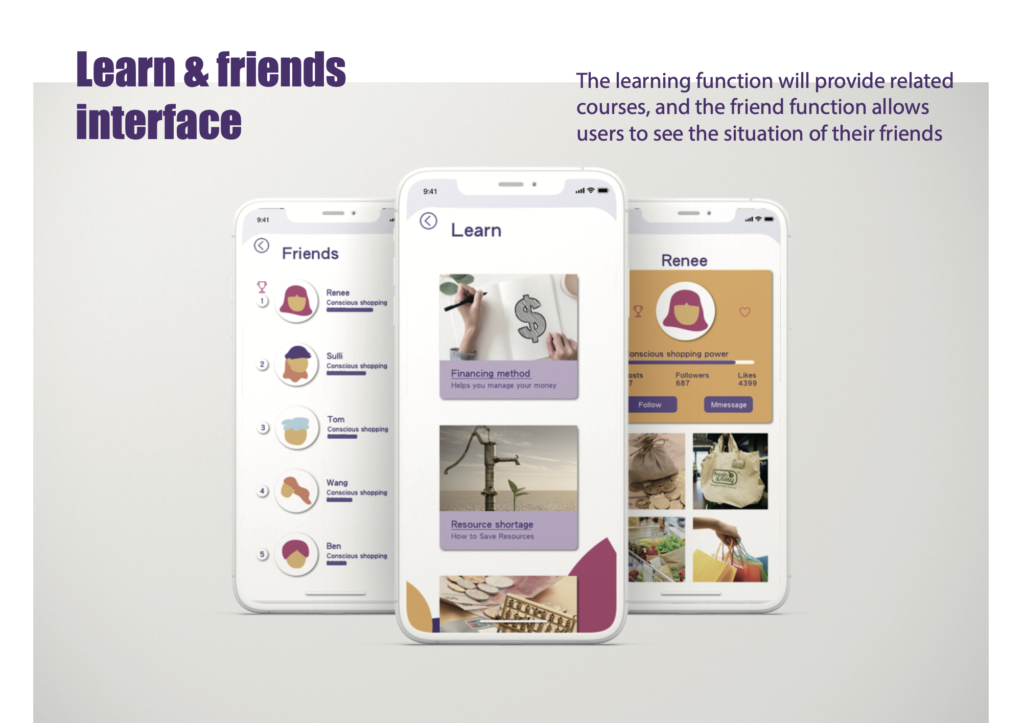
This is my pdf version, you can also download it.